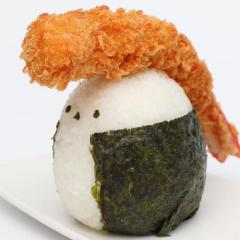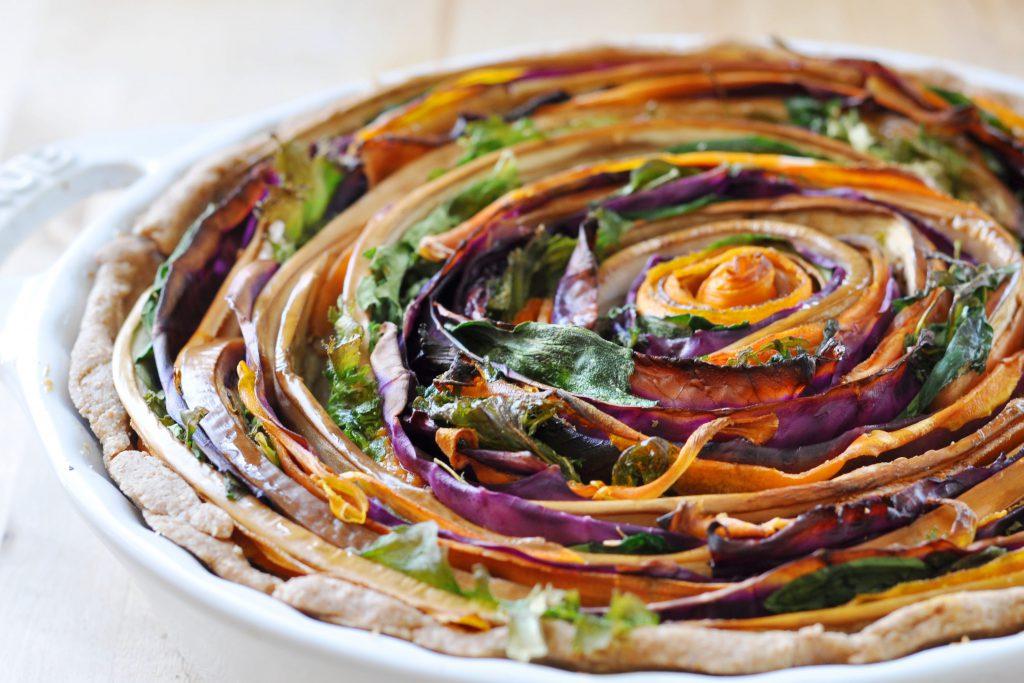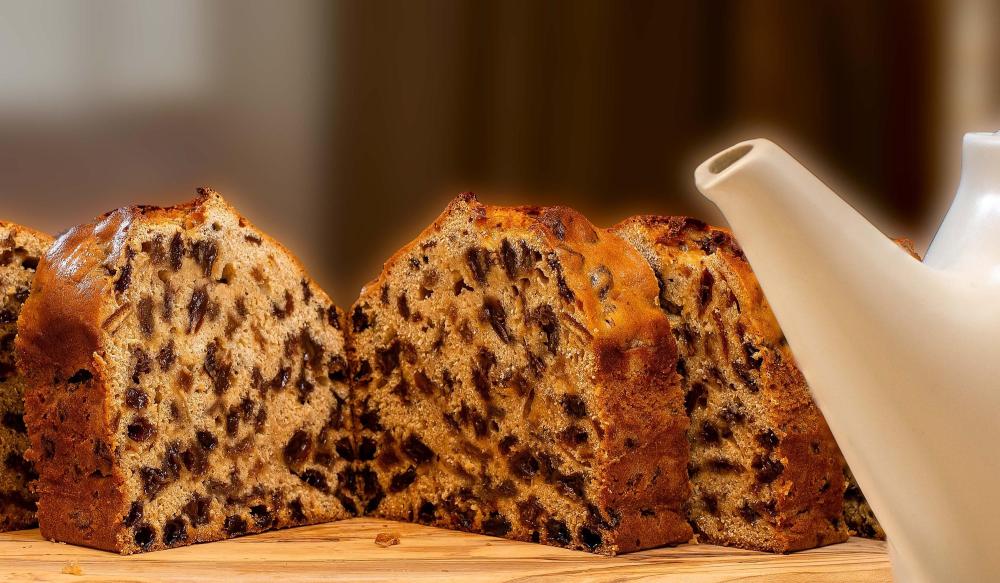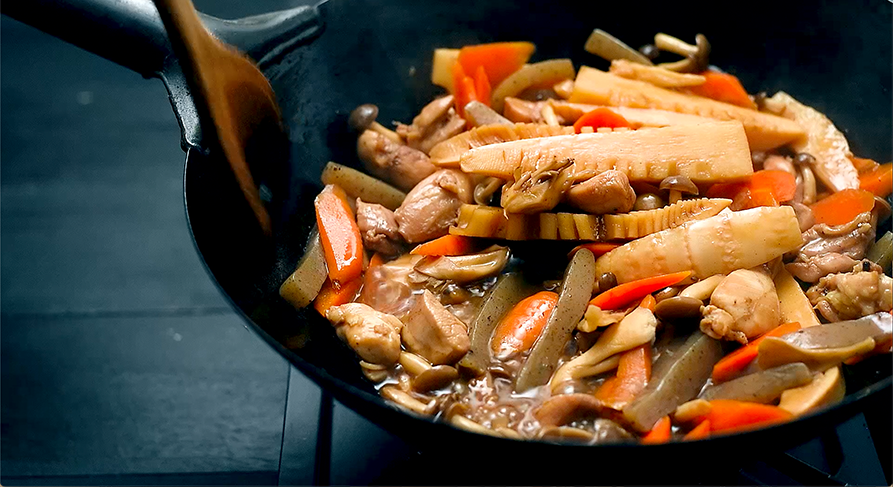-
Posts
281 -
Joined
-
Last visited
Content Type
Profiles
Forums
Store
Help Articles
Everything posted by cteavin
-
Every year I order 9 kilos of quince and preserve them -- they're my favorite fruit. (They're waiting for me in the kitchen, atm.) This year I bought an extra 3 kilos for jelly. I don't see quince getting the love they deserve. Anyone else here a fan? Any favorite recipes or ideas you want to share?
- 1 reply
-
- 2
-

-
Every dent helps. This is a great idea! I'll do a bit of research. Thanks! YOU are a national treasure! xo I guess I could do the calculations to work out how much sugar and water are in 70 degree brix syrup and start here. Oh, and I just put some orange syrup in a double boiler with fresh ginger and spices for a syrup to flavor my tea/coffee. I might get close to Pumpkin Spice lattes. Thank you all for the suggestions.
-

Your Daily Sweets: What Are You Making and Baking? (2017 – )
cteavin replied to a topic in Pastry & Baking
Baking powder. I did/do make a yeasted version but it's much less decadent that this. If you're interested, here's a video I made. The recipe is in the comments. -
I must have about three quarts of orange syrup, and one quart each of lemon, pineapple and ginger syrup. All of it is at 70 degrees Brix. Any idea on what to do with it? I was thinking to make jelly with some of the orange but every recipe I can find online only talks in granulated sugar. I was also thinking of making a very strong tea and making a tea jelly with some of the lemon, but not sure if that would even work. What do you do with your leftover syrups? Any thoughts on what to do with all this extra?
-

Your Daily Sweets: What Are You Making and Baking? (2017 – )
cteavin replied to a topic in Pastry & Baking
I made barnbrack recently. (I've actually made a couple. I really like the tea plumped raisins and sultanas.) -
Plug those same children into WWII where there's nothing to eat and those tastes will disappear quickly. One thing I haven't seen in this thread is role of choice: If you teach a person (I'm not singling out children) that they have choices and that they are individual and express that individuality through those same choices, you get picky eaters. I have watched clicks of feral teenagers suddenly declare themselves vegan -- and then just as quickly, not. I've seen adults take on all kinds of diets (keto, macrobiotic, paleo) just because they learned that this option exists and found something that either pulls them into a (new) group or separates them from the people around them. In other words, picky eaters. Here's a random thought: Vegetarians are to blame. Here's my thinking. From the 60's, when vegetarianism gained acceptance in North America, families had a choice, watch their child pick off the plate or made a dish just for them. That family goes to another person's home for dinner, that new family feels an obligation to oblige and so creates a special dish. Community functions, the same, people start to bring special foods to cater to a minority and that new food becomes part of the norm. Lather, rinse, repeat. I said blame to be tongue in cheek, but I can imagine an alternate reality in which parents refused to make something special and so this idea that there were options out there would never have caught on. This is the Asian model. But for those of us living in a multicultural area, picky eaters may be inevitable as every group has their own preferences and prohibitions.
-
Maybe, but it's just a study. I threw the idea out there because it came to mind. And now that I think of it, that part of the study was more specifically about The US and Japan. I often read about people fussing over people's (food) wants/preferences, but here in Japan it's rare. Mom, or the host, makes one meal and everyone eats regardless of their preferences.
-
There was a cross-cultural study done a few years back that sought to answer the why and how Asian culture is different from Western. One part of the results detailed how Western society has in place structures that encourage kids to make decisions while Asian society has in place structures of trust (in authority). A simple example is in Western countries a parent/guardian is more likely to ask a child what they want to eat whereas in Asian countries the food is prepared and the child trusts the "elder's" judgement. That came to mind when I read your comment.
-
Manager note: This and subsequent posts were split from https://forums.egullet.org/topic/162779-classifying-dishes/?do=findComment&comment=2302621 The rest of the comments are all very interesting. With the exception of chicken pot pies, I grew up with the expectation that if it's in a pie shell or form, it must be sweet. Of course I grew out that, but as someone mentioned, beans with sugar (or sweetened rice) are unthinkable in some cultures. One thing I can tell you about this, if you want to get your kids to eat more vegetables and not complain, this is the way to go.
-
A couple of reasons: When I make these at home, most people assume they're desserts, especially when I pipe them onto pastry. The other is that the photo I chose to use was of pumpkin and I didn't want people to think it was a pumpkin pie.
-
(Recipe Follows) I don't have a name for these particular dishes -- I've been making them since university -- and I'd love to hear your ideas on what to call them. In short, they are raw or roasted vegetables folded into a Béchamel. You can add (what I call mix-ins) to enrich the flavors, but they are not needed. They simple but elegant and are an excellent way to improve any meal. Here is a link to the video detailing all of the steps. https://www.youtube.com/watch?v=ixqB1HfK_bw Base 1 prebaked tart shell or pastry 2 cups of milk 40 grams of white flour (approx. 4tbs) 56 grams of butter (approx. 3 tbs) 1-2 cups of minced vegetable (broccoli, cauliflower, carrots are good options) OR 1 -2 cups roasted vegetables, chopped (such as kabocha, turnips, parsnips)Salt to taste. Optional Mix-Ins 1/2 - 1 cup cheese (parmesan or Swiss cheeses are especially good) 1 teaspoon fresh herbs 1 egg yolk 1/8 teaspoon of nutmeg Minced bacon or ham Make the White Sauce In a saucepan melt the butter. Add all the flour at once and cook for about 3 minutes. With a whisk in hand, add all of the milk at once and stir quickly and constantly until the flour mixture is dissolved. (The milk MUST be cold. If the milk is warm, you will create lumps in the sauce.) With a wooden spoon or rubber spatula, continue to stir the mixture until it thickens. This should take 2 - 4 minutes over medium heat. Add all of your minced vegetable and stir to incorporate. Add in any mix-ins you would like to incorporate. If you plan to bake, remove from heat and pour into a prepared tart shell and bake for 40 minutes at 180°C/350°F. If you plan to serve without baking, continue to cook on the stove top for 5-10 minutes stirring constantly to "cook" the vegetable to your liking. However you prepare it, it will thicken as it cools to room temperature. Serve at room temperature or cold. Note: As a failsafe, you can prepare a mixture of tablespoon corn/potato starch dissolved in 3 tablespoons water. If your sauce is too liquid by the end of cooking (at the end of step 6) begin to add this solution to the mixture and stir vigorously to quickly thicken the sauce
-
-
One of three things in order of time: A protein shake, chicken with sauce, or takikomi. For the chicken, chicken breast in the grill. In a bowl, I put yogurt and some gran masala spice OR sriracha sauce, and I chop the chicken and combine. (Takes 5 minutes.) Takekomi (there's a recipe here some where) is just rice and chicken/fish + veggies in the rice cooker. It's a much faster version of a slow cooker meal. (Ready in 22 minutes.)
-

What recipe do you want to be remembered for?
cteavin replied to a topic in Food Traditions & Culture
You know, I was going to add "and tell us how you make it" to the original post, now I'm really glad I didn't. lol -
-
In Italy, they definitly were. The ones I made yesterday, I did not. I rolled it into a log, sliced it, baked for ten minutes and ate half when they cooled (they were so good). I had few with my morning coffee this morning (as good as last night). I'm letting the rest sit out to see how easily they dry out. I'm getting the sense that the fat in the yolk is keeping them moist.
-
This will be the second year I've not been able to travel (thank you Covid) -- and I'm used to getting out and about to meet new people. One of my favorite things to do when I travel is find a cooking lesson I can attend in the whatever country I go to. This gives me a chance to meet local people, meet fellow travelers, and get a feeling for the local cuisine, all things I can't really do because I can't/haven't been able to travel, so I'm looking for a vicarious version -- one of the reasons I joined eG, which I love, but I've noticed that it's largely American food focused and I'd like to shake things up a bit by hitting up some other forums where people talk about their own cooking styles. Looking in these 'Regional Cuisine' boards, there's very little activity, which is a shame. I'd be very interested in anyone here knows an eG type forum/place where Canadians, Australians, New Zealanders, Brits talk about their foods. And just to be crystal clear, I'm not dissing eG or American cuisine, I'm just looking to broaden the conversation.
-
A long, long time ago I spent a winter in the north of Italy and the grandmother of the house I was staying in made these amazing biscotti using only egg yolks, no butter or any other liquids. I remember even then being impressed as the very dry ingredients eventually came together into a 'wet' ball. I was thinking about that this evening and put in a food processor 1/2 cup of brown sugar, a pinch of salt, and 1/4 cup of milk powder with two egg yolks. When it came together I added a cup of flour and after a few minutes in the FP, it formed a perfect dough I then kneaded chocolate chips and walnuts into. The dough was delicious and the baked cookies were fantastic, so I wanted to know if this was species, genre, type of cooking and if so what they are called. I want to try more recipes. Thank you,
-
I'm pretty sure I've seen this composition in a museum somewhere....
-
Three versions of oyakodon follow. The first is the most complex for Maximum Umami. The other two take no more than 20 minutes from start to finish. Here's a YouTube video that shows you all the steps. https://www.youtube.com/watch?v=Zm-1RUhZYXA For One Serving 1/2 cup of strong dashi (120ml) 1/2 - 1 tablespoon soy sauce (7-15ml) 1/2 - 1 tablespoon mirin (7-15ml) 1/4 onion, sliced 1/2 boneless chicken thigh with skin (150 grams) 1 - 2 eggs The green from a leek, negi, scallion (optional) Mitsuba (optional) Sansho (optional) Four Servings 2 cups of strong dashi (480ml) 2 - 4 tablespoons soy sauce (30-60ml) 2 - 4 tablespoons mirin (30-60ml) 1 medium onion, sliced 2 boneless chicken thighs with skin (600 grams) 4 - 8 eggs The green from a leek, negi, scallion (optional) Mitsuba (optional) Sansho (optional) Dashi 1. Strong homemade dashi: 30 grams kombu, 30 grams bonito flakes per 1 liter of water 2. Soak the kelp/kombu in 1 liter of water overnight (between 8 to 24 hours), remove and bring to the simmer. 3. Add the bonito flakes and keep at the simmer for 2 minutes then strain through a fine mesh sieve. (If you're fussy, you can strain through a paper towel or coffee filter, otherwise particulate will settle at the bottom of the bowl which you can remove later. ) 4. Let the dashi cool to room temperature. Prepare the Chicken 1. Salt your chicken on both sides for fifteen minutes. 2. Pour 2 cups of dashi in a flat pan. 3. Rinse off the salt and dry the chicken. 4. In a skillet, sear the chicken on both sides, skin side first to render the fat. (Note: if you're using a regular skillet, brush the skin with a flavorless oil to prevent sticking.) 5. When the chicken is good and hot add it to the dashi to cool to room temperature. (Note: As the chicken cools, it will absorb the flavors from the dashi. At the same time, the dashi will take on the chicken flavor. This maximizes the umami in the chicken while making the sauce that flavors the rice rich in chicken flavor for an amazing end result.) 6. You can keep the chicken in the fridge for several days or when it reaches room temperature, you can proceed. Mise in Place 1. Remove the chicken from the dashi and slice or dice 2. Per one cup chicken dashi add 1 - 2 tablespoons of both soy sauce and mirin. 3. Slice half an onion into slices as thick as you please. 4. Partly beat 1 - 2 eggs 5. Chop the green from a leek, negi, or scallion and/or, if you can find it, mitsuba (a Japanese herb/vegetable). 6. Reserve an egg yolk if you like. 7. Reserve sansho if you like. Making the Oyakodon 1. In a skillet or saucepan wide enough to hold your liquid so that it can poach the ingredients, add 1/2 - 1 cup of the chicken dashi. 2. Add 1/4 - 1/2 of the sliced onions. Bring to a boil on med-high heat, cover and let cook for no more than two minutes. 3. Uncover and add the meat, about 150 grams per person, or half the leg/thigh. Cover and cook for five minutes. 4. Turn down the heat to low and add 3/4 of the egg mixture. Cover and cook for two minutes. 5. Add the rest of the egg and cook to your desired doneness. (Note: The egg is cooked in two portions to give two different textures, a firm and less firm egg. Typically, the egg is undercooked by Western standards, is perfect by Japanese standards.) 6. Pour the sauce over a bowl of rice and top with the chicken and egg mixture. 7. Garnish with egg yolk, the green vegetable, and/or sansho. __________ Regular Oyakodon For One Serving 1/2 cup of dashi (120ml) 1/2 - 1 tablespoon soy sauce (7-15ml) 1/2 - 1 tablespoon mirin (7-15ml) [see note at bottom] 1/4 onion, sliced 1/2 boneless chicken thigh with skin (150 grams) 1 - 2 eggs The green from a leek, negi, scallion (optional) Mitsuba (optional) Sansho (optional) Prepare your ingredients: Slice or dice the chicken Add 1 - 2 tablespoons of both soy sauce and mirin to the dashi. Slice half an onion into slices as thick as you please. Partly beat 1 - 2 eggs Chop the green from a leek, negi, or scallion and/or, if you can find it, mitsuba (a Japanese herb/vegetable). Reserve an egg yolk if you like. Reserve sansho if you’d like. Making the Oyakodon In a skillet or saucepan wide enough to hold your liquid so that it can poach the ingredients, add the dashi. Add the sliced onions. Bring to a boil on med-high heat, cover and let cook for no more than two minutes. Uncover and add the chicken. Cover and cook for five minutes. Turn down the heat to low and add 3/4 of the egg mixture. Cover and cook for two minutes. Add the rest of the egg and cook to your desired doneness. (Note: The egg is cooked in two portions to give two different textures, a firm and less firm egg. Typically, the egg is undercooked by Western standards, is perfect by Japanese standards.) Pour the sauce over a bowl of rice and top with the chicken and egg mixture. Garnish with egg yolk, the green vegetable, and/or sansho. High Protein/Healthy Oyakodon For One Serving 1/2 cup of dashi (120ml) 1/2 - 1 tablespoon soy sauce (7-15ml) 1/2 - 1 tablespoon mirin (7-15ml) [see note at bottom] 1/4 onion, sliced 1/2 skinless chicken breast (150 - 300 grams) 2 - 4 egg whites The green from a leek, negi, scallion (optional) Mitsuba (optional) Sansho (optional) Prepare your ingredients: Slice or dice the chicken Add 1 - 2 tablespoons of both soy sauce and mirin to the dashi. Slice half an onion into slices as thick as you please. Reserve the egg whites. Chop the green from a leek, negi, or scallion and/or, if you can find it, mitsuba (a Japanese herb/vegetable). Reserve an egg yolk if you like. Reserve sansho if you’d like. Making the Oyakodon In a skillet or saucepan wide enough to hold your liquid so that it can poach the ingredients, add the dashi. Add the sliced onions. Bring to a boil on med-high heat, cover and let cook about four minutes. Uncover and add the chicken. Cover and cook for two minutes. (Note: Chicken breast cooks quickly, so you need a short cooking time or it will be dry.) Turn down the heat to low and add the egg whites. Cover and cook until they cooked to your liking. (Note: Typically the dish is served with the egg undercooked, but tastes vary, so cook to the degree you like.) Pour the sauce over a bowl of rice and top with the chicken and egg mixture. Garnish the green vegetable, and/or sansho.
- 1 reply
-
- 1
-

-
I think of it as being more southern, but in uni boxes of Kraft Mac&Cheese were, side by side instant ramen, the cheapest/easiest things students could buy, so I imagine everyone would have eaten it at some point. Living in Japan, I often get asked what is something quintessentially American, I default to peanut butter and Mac & Cheese.
-
I have. Underbaked it is closer to the texture I'm looking for but it doesn't hold together.
-
When I was a kid there was a show called Remington Steel. In one episode, the man who created the calorie-free chocolate chip cookie was murdered, and all these years later I still think about that cookie. It's the Holy Grail, for me, anyway. The other day I had some extra "de-watered" yogurt (think Greek yogurt) and on a whim I decided to use it place of butter in a chocolate chip cookie recipe. It was pretty good. Long story short, the tanginess from the yogurt really matches oranges and chocolate chips and I've made a few different batches with the expected cake like texture, but I wanna make it closer to gooey. Replacing the egg whites for yolks only takes me so far -- and adds calories... I wanted to pick your brains: Hokkaido Milk Bread is made tender and moist without added fat by making a "panade" of milk and flour, basically a thickened paste they fold into the flour with the rest of the liquids. Has anyone here ever used such a method in cakes, cookies or other confections? Any thoughts of what might happen if used in cakes and cookies?







